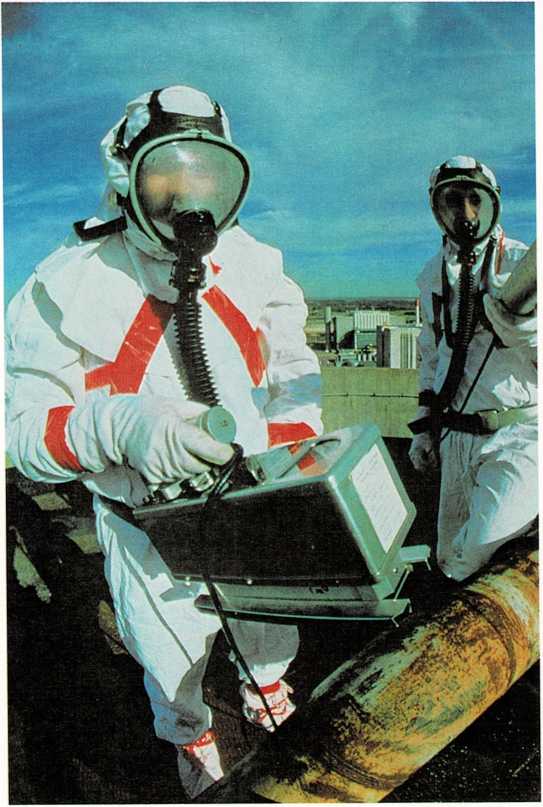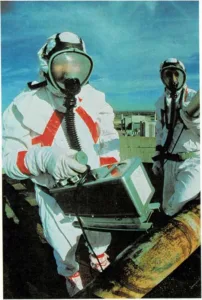Putting atoms to work
What makes electricity for your home? It comes from buildings called
power plants. In most places, power plants use energy from coal, oil, or
gas to make electricity. But some power plants use a different kind of
energy— nuclear, or atomic, energy.
Dangerous radiation may leak from a nuclear power plant—so these
workers test the area around the plant to make sure it is safe. The
suits, gloves, and masks protect them while they work.

Nuclear energy is made by breaking apart the center, or nucleus, of a
certain kind of atom—usually uranium (yu RAY nee uhm). When uranium
atoms break apart, they give off heat energy. This energy is used to
make steam. And the steam runs the generators— the machines that make
electricity.
Most power plants burn tremendous amounts of fuel. So power plants that
use nuclear energy save a lot of coal, oil, or gas.
But there are problems with nuclear energy, too. Uranium atoms are
radioactive —they give off rays that are dangerous to living things. Scientists and engineers
have to make sure that radioactivity doesn’t get out of the power plant
and into the air, water, or soil.
The uranium in a nuclear power plant is surrounded by heavy walls of
steel and concrete to protect people from the rays. And the atoms are
broken apart bit by bit, so that the uranium does not overheat. If it
did overheat, it could melt or crack the walls, and the dangerous rays
would escape. Even though the uranium is handled very carefully, many
people worry about possible accidents.
And when uranium atoms are broken up, radioactive waste is left. This
waste stays radioactive for thousands of years! Safe ways have to be
found to store the waste from the used-up uranium, so that people won’t
be hurt by the dangerous rays.

